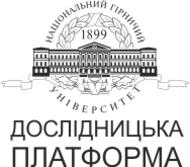№78-7
Quantitative assessment of groundwater resource storage capacity and geomechanical stability of a disturbed rock massif
I. Sadovenko, V. Tymoshchuk, А. Zahrytsenko, Y. Sherstiuk
1Dnipro University of Technology, Dnipro, Ukraine
Coll.res.pap.nat.min.univ. 2024, 78:78–89
Full text (PDF)
https://doi.org/10.33271/crpnmu/78.078
ABSTRACT
Purpose. To assess the storage capacity of the mined out and flooded section of the mine field for hydrogeomechanical risk determination, prevention of water inflow emergencies and substantiation the engineering protection measures in influence zone of the water body.
The methods. Predictive calculations were performed using the methods of numerical mathematical modeling of hydrodynamic and geomechanical processes implemented by the method of finite differences and finite elements. Simulation technique involves the solution of a series of inverse problems, which allows us to obtain high reliability forecasts in conditions of multi-factorial influence and uncertainty of the rock massif state.
Findings. The sandstones of the main roof of the coal seam have a dominant influence on the water influx formation into designed workings within the influence zone of flooded section of the mine field. Flooded mine workings due to increased hydraulic permeability play the role of a recharge contour, which appears as keeping the hydraulic pressures over the designed galleries. Involvement of the designed workings into post-ultimate deformation zone occurs when their distance from the flooded contour is less than 20.0 m, going beyond the zone of shear deformations – when moving away to a distance of 30.0 m. According to the hydrogeomechanical condition of the rock massif, the calculation option, where the designed workings are placed at a distance of 20 m from the flooding contour, is the most optimal. Since the geotechnical situation is determined by a significant number of probable characteristics (properties of rocks, water influx rates, the boundary and timing of flooding, the mapping accuracy of the geological structure of the site), as well as the substantive influence of rock structural and textural characteristics around flooded workings, technological measures of mining under protection of hydrodynamic depression have been developed.
The originality. The regularities of the water balance formation within the area affected by the flooded workings, and the dependence of the geomechanical parameters of massif stability on the state of the excavated space, pressure values, and the barrier pillar dimensions were found.
Practical implementation. Parameters of barrier pillar, which allow minimize hydrogeomechanical risks and mineral deposit loss are substantiated. Recommendations concerning mining operation procedure around flooded workings under protection of hydrodynamic depression are given.
Keywords: flooded mine workings, geofiltration, hydrogeomechanical state, mathematicalmodeling, water influx protection measures.
References
1. Vladyko, O., Kononenko, M., & Khomenko, O. (2012). Imitating modeling stability of mine workings. Geomechanical Processes During Underground Mining, 147–150. https://doi.org/10.1201/b13157-26
2. Babets, D.V., Sdvyzhkova, O.O., Larionov, M.H., Tereshchuk, R.M. (2017). Estimation of rock mass stability based on probability approach and rating systems. Naukovyi Visnyk Natsionalnoho Hirnychoho Universytetu, (2), 58–64
3. Bondarenko, V., Kovalevs’ka, I., & Fomychov, V. (2012). Features of carrying out experiment using finite-element method at multivariate calculation of mine massif – combined support system. Geomechanical Processes During Underground Mining, 7–13. https://doi.org/10.1201/b13157-3
4. Bazaluk, O., Rysbekov, K., Nurpeisova, M., Lozynskyi, V., Kyrgizbayeva, G., & Turumbetov, T. (2022). Integrated monitoring for the rock mass state during large-scale subsoil development. Frontiers in Environmental Science, (10), 852591. https://doi.org/10.3389/fenvs.2022.852591
5. Sudakov, А., Dreus, A., Kuzin, Y., Sudakova, D., Ratov, B. & Khomenko, O. (2019) A thermomechanical technology of borehole wall isolation using a thermoplastic composite material. E3S Web of Conferences 109 00098 Essays of Mining Science and Practice. https://doi.org/10.1051/e3sconf/201910900098
6. Chudyk, І.І., Femiak, Ya.M., Orynchak, М.І., Sudakov, A.K. & Riznychuk, А.І. (2021). New methods of preventing crumbling and collapse of the borehole walls Naukovyi Visnyk Natsionalnoho Hirnychoho Universytetu, 4, 17–22. https://doi.org/10.33271/nvngu/2021-4/017
7. Pedchenko, S.V. (2013) Obgruntuvannia hidroheomekhanichnykh parametriv stiikosti bar′iernykh tsilykiv pry zatoplenni vuhilnykh shakht Donbasu. Kremenchuk: Kremenchutskyi natsionalnyi universytet im. M. Ostrohradskoho: Visnyk KrNU im. M. Ostrohradskoho, 1/2013(78), 80–84.
8. Sadovenko, I., Zagrytsenko, A., Podvigina, O., & Dereviagina, N. (2016). Assessment of environmental and technical risks in the process of mining on the basis of numerical simulation of geofiltration Mining of Mineral Deposits, 10(1), 37–43. http://dx.doi.org/10.15407/mining10.01.037
9. Zahrytsenko, A., Podvigina, O., & Dereviahina, N. (2018) Scientific and methodological foundations to develop numerical hydrodynamical models of mine fields in Donbas. E3S Web of Conferences, 60, 00034 https://doi.org/10.1051/e3sconf/20186000034
10. Sadovenko, I., Tymoshchuk, V., Zahrytsenko, A., Rodríguez, F., Sherstiuk, Y., Vlasov, V., & Chushkina, I. (2024). Hydrotechnical and ecological principles of water resources management for a mined-out mine field. IOP Conference Series: Earth and Environmental Science, 1348(1), 012069. https://doi.org/10.1088/1755-1315/1348/1/012069
11. Tymoshchuk, V., Sherstiuk, Y., Niedbalski, Z., & Morozova, T. (2017). Modeling the drainage facilities operation at the prospective construction site on the Dnipro floodland. Mining Of Mineral Deposits, 11(2), 34–40 https://doi.org/10.15407/mining11.02.034
12. Sadovenko, I., Rudakov, D., Zahrytsenko, A., & Derevaygina, N. (2020). Optimization of environmental engineering protection and water resource use at the most watered mine in Ukraine. Resource-saving technologies of raw-material base development in mineral mining and processing, 501–513. https://doi.org/10.31713/m931
13. Langevin, C. D., Hughes, J. D., Banta, E. R., Niswonger, R. G., Panday, S., & Provost, A. M. (2017). Documentation for the MODFLOW 6 Groundwater Flow Model. Techniques and Methods. https://doi.org/10.3133/tm6a55
14. United States Geological Survey, 2022. MODFLOW-6 – Description of Input and Output (Version 6.4.1). United States Geological Survey, Water and Science Availability and Use Science Program, MODFLOW 6 Development Team. Dec 2022. PMWIN (Processing Modflow for Windows) help, http://www.pmwin.net/index.htm
15. Pivnyak, G., Dychkovskyi, R., Bobyliov, O., Cabana, E. C., & Smoliński, A. (2018). Mathematical and Geomechanical Model in Physical and Chemical Processes of Underground Coal Gasification. Solid State Phenomena, (277), 1–16. https://doi.org/10.4028/www.scientific.net/ssp.277.1
16. Duncan, J.M. (2000). Factors of safety and reliability in geotechnical engineering. J. Geotechnical & Geoenvironmental Engineering, April, 307–316.
17. Kinzelbach, W. (1986). Groundwater modeling. Amsterdam: Elsevier.
18. McDonald, M.G., & Harbaugh, A.W. (1984). A modular three-dimensional finite-difference ground-water flow model. Open-File Report. https://doi.org/10.3133/ofr83875




